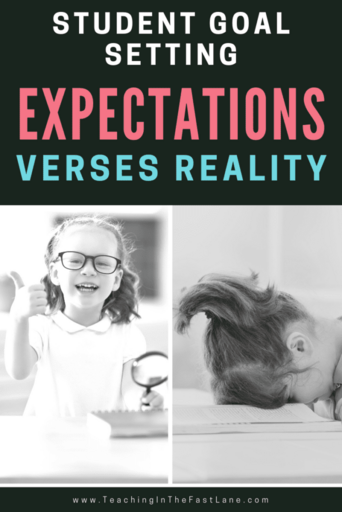
Do you use student goals in your classroom?
You should!
I will walk you through how to gather data, set a goal, measure achievement, and celebrate success!
What Are Student Goals?
Student goals are data-based goals that students set themselves, with teacher input. They can be academically or socially based and have the ability to be measured.
How to Establish Student Goals
All student goals should be SMART. This means Specific, Measurable, Achievable, Realistic, and Time-bound. While this criterion will take some practice, it will ensure that goals are completed and increase the achievement of students in and out of the classroom.
Step #1: Data
All student goals should be measurable and specific. This means they need to be based on the standards. Whether you are working towards growth in math or social skills, students and adults alike need to know exactly what they are working on.
Having written I can statements or your learning standards readily available is vital.
Step #2: Glow and Grow
Once you have gathered your data, meet with your student to discuss their glow areas where they shine as well as their grow areas where improvement is needed.
I always like to use the sandwich approach where we discuss a glow area, then a grow area, followed by another glow area. This leaves students confident going into the actual goal setting.
Step #3: Set Student Goals
After selecting a glow area to work on, you are ready to set the goal.
Say a student is working on measuring angles and right now is getting about 50% of questions on the weekly warm-up correct.
An example of a goal would be, I will get 80% of measuring angles with a protractor questions correct by March first. This goal is specific, achievable, and time-bound as well as being realistic.
Next, talk to the student about what they can do to achieve their goal. This may involve strategies or setting smaller goals that will help them achieve their larger goal.
Step #4: Learn and Reflect
This is where the magic happens.
Students will work towards their goals meeting with you occasionally to discuss progress and make adjustments as necessary. These meetings do not need to be formal, but are more check-ins to see if the student needs any additional support.
Step #5: Celebrate Successes
Of course, you should always celebrate successes. This does not just mean to celebrate achieving the big goal, but also all the little achievements and hard work along the way.
Students goals are all about increasing achievement, building confidence, and showing students how to light the fire inside of themselves to meet their needs.
If a student doesn’t meet a goal, adjust and move forward. Definitely do not shame students who do not meet their, instead celebrate the progress they have made and keep going.
Tips
My biggest tip would be to start small. One goal at a time.
Next, involve students in every step of the process. This makes the goals more meaningful and gives them ownership over their own learning.
Don’t be afraid to adjust. Sometimes we can be a bit over or under ambitious when getting started and need to adjust goals along the way. This is all part of the process and should be done as often as needed.
Get Started!
There is no better time to get started with student goals than today. Whether you dive right in with your whole class or give it a whirl with just a couple of students, I encourage you to get started today.
Want Easy Data?
If you don’t know where to start with data for goals, check out the Digital Test Smash series. These review activities are Google Forms that will give you instant feedback and allow students to track their own progress.
